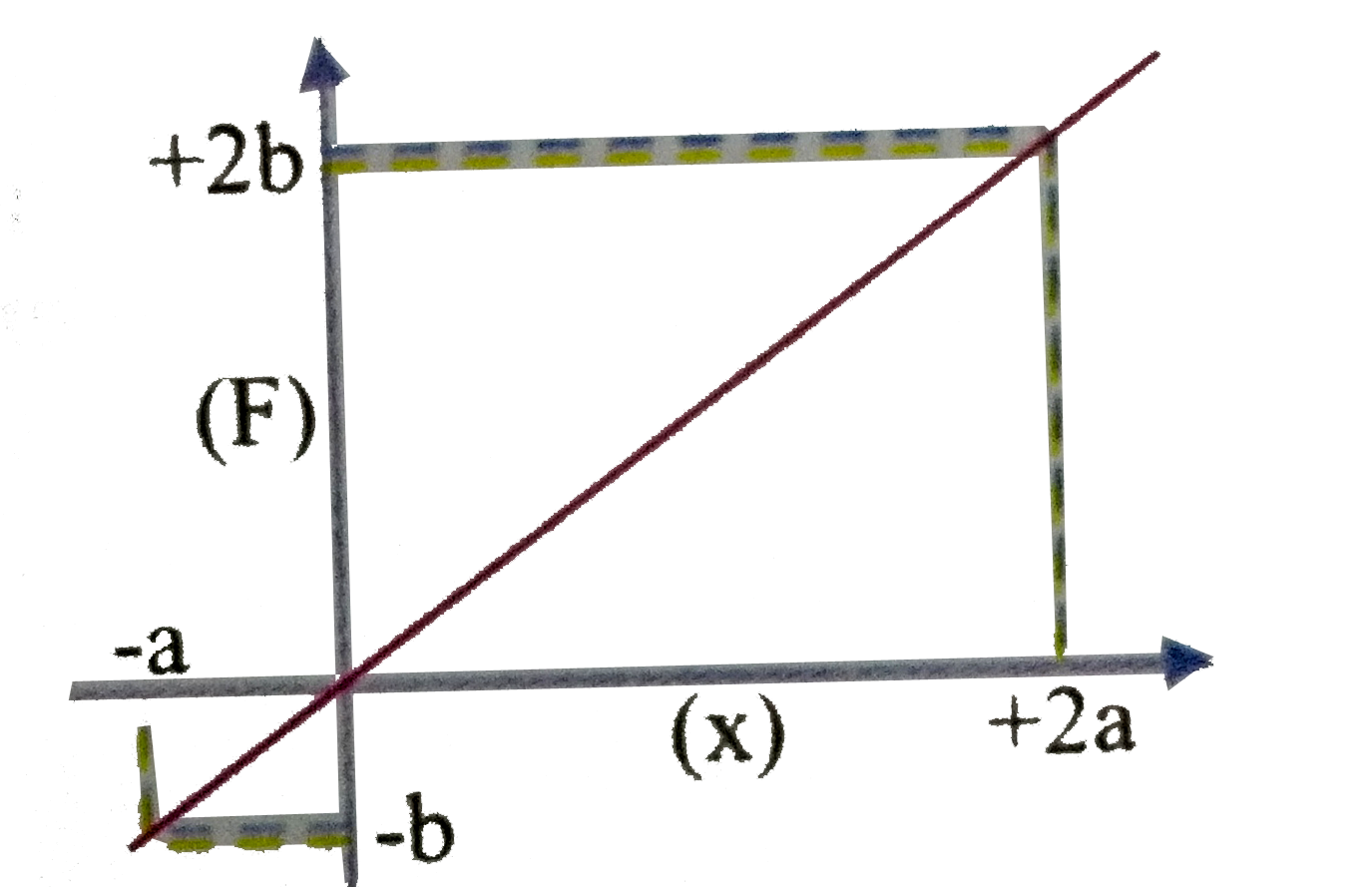The velocity (v) of a particle (under a force F) depends on its distance (x) from the origin (with x>0) v∝1√x. Find how the magnitude of the force (F) on the particle depends on x.
F∝1x3/2
F∝1x
F∝1x2
F∝x
The correct Answer is:C
the velocity of a particle under force from the origin, v∝1√x
Differentiating both sides, with respect to time t, we get
dvdt=12x3/2dxdt or dvdt=12x3/2_.1x1/2
dvdt=12x2
Multiplying both sides by mass m, we get
m×dvdt=m×12x2 or F∝1x2
Topper's Solved these Questions
- BOOK - MTG-WBJEECHAPTER - LAWS OF MOTION EXERCISE - WB JEE PREVIOUS YEARS QUESTIONS (CATEGORY 2: SINGLE OPTION CORRECT TYPE (2 MARKS))1videos
LAWS OF MOTION
- BOOK - MTG-WBJEECHAPTER - LAWS OF MOTION EXERCISE - WB JEE PREVIOUS YEARS QUESTIONS (CATEGORY 3: ONE OR MORE THAN ONE OPTION CORRECT TYPE (2 MARKS))2videos
LAWS OF MOTION
- BOOK - MTG-WBJEECHAPTER - LAWS OF MOTION EXERCISE - WB JEE WORKOUT (CATEGORY 3: ONE OR MORE THAN ONE OPTION CORRECT TYPE (2 MARKS))10videos
LAWS OF MOTION
- BOOK - MTG-WBJEECHAPTER - KINETIC THEORY OF GASES EXERCISE - WB JEE PREVIOUS YEARS QUESTIONS (MCQ)7videos
KINETIC THEORY OF GASES
- BOOK - MTG-WBJEECHAPTER - MAGNETIC EFFECT OF CURRENTEXERCISE - WB JEE Previous Years Questions22videos
MAGNETIC EFFECT OF CURRENT
Similar Questions
Knowledge Check
- Question 1 - Select One
The velocity of a particle varies with its displacement as v=(√9−x2)ms−1.
Find the magnitude of the maximum acceleration of the particle.A3ms−2B4ms−2C3.5ms−2D5ms−2 - Question 2 - Select One
For a particle showing motion under forces F=−5(x−2) , the motion is
ATranslatoryBOscillatoryCSHMDBoth (2) & (3) - Question 3 - Select One
A particle moves under force F−5(x−2)3 .Motion of the particle is
ATranslatoryBOscillatoryCSHMDAll of these
A particle is moving along x-axis under the action of a force F, which varies with its position (x)asf∝1√x.Find the variation of power due to this force with x.
View SolutionA force F is related to the position of a particle by the relation F=(10x2)N . Find the work done by the force when the particle moves from x=2m→x=4m.
View SolutionOn a rough horizontal x-y plane a body starts moving from origin with initial velocity (V0)ˆi. A constant force (F0)ˆj is always acting on the body. Kinetic friction on the body has magnitude F0. Find the magnitude (in m/s) of velocity of the particle when its direction makes an angle of 60∘ from y-axis. V0=12m/s, F0 = 10N, mass of body = 1kg.
View SolutionThe force of a particle of mass 1 kg is depends on displacement as F = —4x then the frequency of S.H.M. is
View SolutionA force F acting on a particle varies with the position x as shown in the graph. Find the work done by the force in displacing the particle from x=−a to x=+2a.
 .View Solution
.View Solution

